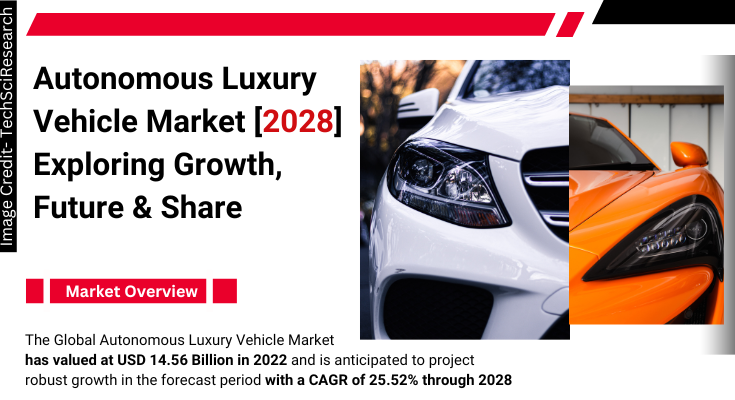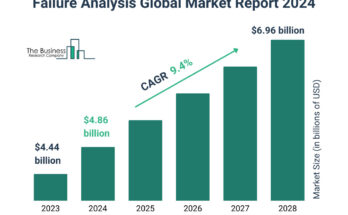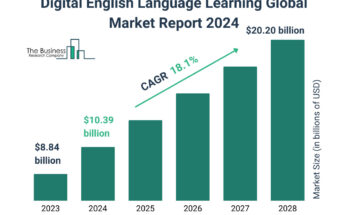According to TechSci Research report, “Global Autonomous Luxury Vehicle Market – Industry Size, Share, Trends, Competition Forecast & Opportunities, 2028”, the Global Autonomous Luxury Vehicle Market stood at USD 14.56 Billion in 2022 and is anticipated to grow with a CAGR of 25.52% in the forecast period, 2024-2028. The global autonomous luxury vehicle market is witnessing exceptional growth, driven by the convergence of rapid technological advancements and a significant rise in disposable income across the globe.
These sophisticated vehicles, equipped with state-of-the-art features and cutting-edge technologies, are meticulously designed to offer not only unparalleled comfort and convenience but also an exquisite and immersive travel experience. From advanced driver-assistance systems to personalized entertainment options, these vehicles redefine the concept of luxury and elevate the overall journey for discerning travelers.
With their seamless integration of innovative technologies, autonomous luxury vehicles are poised to revolutionize the way we perceive and engage with transportation, setting new benchmarks for opulence, safety, and sustainability.
According to the latest reports, North America is leading the way in this market. With its high adoption rate of autonomous technology and a supportive regulatory framework that encourages innovation, North America has established itself as a frontrunner. However, the Asia Pacific regions are quickly catching up and making significant strides. This is driven by the growing affluent middle class, which is demanding more luxurious vehicles that are seamlessly incorporated with autonomous features. As a result, the competition in the market is intensifying, paving the way for exciting developments and advancements in autonomous technology across the globe.
Despite the promising growth prospects, the market for autonomous luxury vehicles does face certain challenges. One of the major obstacles is the high production costs associated with these vehicles, which hinders their accessibility to a wider consumer base. This is largely due to the advanced technology and sophisticated features incorporated into these vehicles, increasing their manufacturing complexity and cost. However, manufacturers are actively working to overcome this challenge by exploring innovative solutions and cost-effective manufacturing processes. They are investing in research and development to find ways to streamline production, optimize resources, and leverage economies of scale. Additionally, collaboration with suppliers and strategic partnerships are being forged to drive down costs and make autonomous luxury vehicles more affordable and attainable for a broader range of consumers. By addressing these challenges head-on, the market for autonomous luxury vehicles is poised for a future of growth and widespread adoption.
Another critical aspect is ensuring public safety during the integration of autonomous technology. The industry recognizes that the successful adoption of autonomous vehicles relies on building trust with consumers and regulators. To achieve this, rigorous testing, validation, and compliance with regulatory standards are being implemented. Continuous advancements in technology, such as advanced sensor systems and artificial intelligence algorithms, are being developed to enhance the safety and reliability of autonomous vehicles.
By proactively addressing these challenges head-on, the automotive industry is relentlessly pushing towards a future where autonomous luxury vehicles are not only at the forefront of technological advancement but also accessible and affordable to every individual. With a steadfast commitment to safety and innovation, this vision encompasses a seamless integration of cutting-edge technologies and sophisticated design, revolutionizing the way we experience transportation and paving the way for a new era of mobility.
Browse over market data Figures spread through 180 Pages and an in-depth TOC on “Global Autonomous Luxury Vehicle Market.” @ https://www.techsciresearch.com/report/autonomous-luxury-vehicle-market/23685.html
The Global Autonomous Luxury Vehicle Market represents a fascinating intersection of cutting-edge technology, opulent design, and the evolving landscape of personal mobility. As the automotive industry undergoes a profound transformation, autonomous luxury vehicles stand out as a symbol of innovation, offering a glimpse into the future of sophisticated and seamless transportation experiences.
One of the defining characteristics of the Global Autonomous Luxury Vehicle Market is the integration of Artificial Intelligence (AI) and machine learning into the driving experience. Luxury automakers are harnessing the power of AI algorithms to enhance the decision-making capabilities of autonomous systems. This convergence allows vehicles to adapt dynamically to real-world conditions, creating an intelligent and responsive driving experience. Machine learning, a subset of AI, enables continuous improvement by learning from vast datasets, optimizing performance, and ensuring a sophisticated level of adaptability.
Within the realm of autonomous luxury vehicles, there is a pronounced emphasis on transforming the in-cabin experience. As the role of the driver diminishes, the interior space becomes a focal point for luxury automakers. Premium materials, bespoke finishes, and customizable seating arrangements are becoming standard features, elevating vehicles into sumptuous mobile living spaces. This trend is not just about the elimination of the steering wheel; it’s about reimagining the entire interior to offer an unparalleled level of comfort and opulence.
Furthermore, the in-cabin experience is being revolutionized through advanced entertainment and connectivity options. Large infotainment screens, augmented reality displays, and immersive audio systems provide passengers with a myriad of entertainment choices. The autonomous luxury vehicle is designed to be more than just a mode of transportation; it is a cocoon of relaxation, where occupants can engage in work, entertainment, or leisure activities while the vehicle seamlessly handles the driving tasks.
Sustainability has emerged as a pivotal trend in the Global Autonomous Luxury Vehicle Market, aligning with the broader automotive industry’s commitment to environmental responsibility. Luxury automakers are adopting eco-friendly materials, integrating energy-efficient technologies, and incorporating electric powertrains into their autonomous vehicle designs. The pursuit of sustainability extends throughout the vehicle’s lifecycle, encompassing manufacturing processes, operational efficiency, and end-of-life considerations. This trend reflects a holistic approach, acknowledging the environmental impact of luxury vehicles and actively working to minimize it.
Collaborations and partnerships are playing a central role in navigating the complex landscape of autonomous technologies. Luxury automakers are forging strategic alliances with technology companies, startups specializing in autonomous technologies, and other automotive players. These partnerships extend beyond traditional industry boundaries, facilitating the sharing of resources, expertise, and development costs. Collaborations are pivotal for addressing the multifaceted challenges associated with autonomous vehicle development, fostering innovation, and enhancing the overall competitiveness of luxury automakers.
The progressive development of Level 4 and Level 5 autonomy is a defining trajectory in the Global Autonomous Luxury Vehicle Market. Level 4 autonomy signifies the capability of a vehicle to operate autonomously in specific scenarios or environments, such as urban areas or dedicated autonomous lanes. This level of autonomy represents a significant leap forward, allowing the vehicle to handle driving tasks independently in predefined conditions. Level 5 autonomy, the pinnacle of automation, envisions a vehicle that can operate autonomously across all driving scenarios without any human intervention.
Achieving these higher levels of autonomy requires a comprehensive integration of sensor technologies, AI, and advanced algorithms. Luxury automakers are at the forefront of investing in the research and development of technologies that enable these advanced autonomy levels. As these technologies mature, they promise a future where autonomous luxury vehicles can seamlessly navigate complex urban environments, providing occupants with a safe, convenient, and indulgent mode of transportation.
Despite the tremendous promise and innovation within the Global Autonomous Luxury Vehicle Market, several challenges loom on the horizon. The technological complexity and reliability of autonomous systems pose a substantial challenge for manufacturers. Striking the right balance between cutting-edge innovation and the robust reliability required for passenger safety remains an ongoing hurdle. High development and manufacturing costs are also a consideration, as luxury automakers strive to create economically viable vehicles without compromising on the premium features that define the luxury segment.
The regulatory landscape presents another significant challenge, as the absence of a standardized and globally accepted framework for autonomous vehicles hampers the widespread deployment of these vehicles. Luxury automakers must navigate diverse regulatory environments, each with its own set of requirements and testing procedures. Building public trust in the safety and reliability of autonomous luxury vehicles is essential but challenging, given the high-profile incidents that have fueled consumer skepticism and concerns.
Infrastructure readiness and connectivity constitute yet another challenge, as the successful integration of autonomous luxury vehicles depends on the availability of robust communication networks, high-precision mapping, and infrastructure equipped with the necessary sensors and signals. Achieving widespread infrastructure readiness requires collaborative efforts between luxury automakers, governments, and infrastructure providers to create an environment that supports the safe and efficient operation of autonomous vehicles.
In conclusion, the Global Autonomous Luxury Vehicle Market is a dynamic and transformative space, where technological innovation converges with opulent design to redefine personal mobility. The industry is witnessing the emergence of vehicles that not only represent the pinnacle of automotive luxury but also embody the future of autonomous transportation. As these vehicles evolve, addressing challenges and leveraging collaborative efforts will be crucial for unlocking the full potential of autonomous luxury vehicles and shaping the next chapter in the history of automotive excellence.
Major companies operating in the Global Autonomous Luxury Vehicle Market are:
- Robert Bosch
- Continental
- Denso
- Delphi Automotive
- Infineon Technologies
- NXP Semiconductors
- Valeo
- Texas Instruments
- ZF Friedrichshafen
- Magna International
Download Free Sample Report @ https://www.techsciresearch.com/sample-report.aspx?cid=23685
Customers can also request for 10% free customization on this report.
“The Global Autonomous Luxury Vehicle Market epitomizes a harmonious fusion of cutting-edge technology and opulent sophistication, heralding a new era in personal mobility. Witnessing the convergence of Artificial Intelligence, sustainable design, and advanced connectivity, these vehicles redefine the driving experience. With an unwavering commitment to in-cabin luxury, eco-friendly practices, and collaborative innovation, the market sets a precedent for a future where autonomous vehicles seamlessly blend cutting-edge autonomy with unparalleled comfort. Despite challenges, including regulatory complexities, the market promises a paradigm shift towards a realm where autonomous luxury vehicles not only embody refined elegance but also pave the way for the evolution of transportation as a personalized, intelligent, and sustainable experience.” said Mr. Karan Chechi, Research Director with TechSci Research, a research-based management consulting firm.
“Autonomous Luxury Vehicle Market –Global Industry Size, Share, Trends, Opportunity, and Forecast, Segmented By Component (Biometric Sensors, Camera Unit, LiDAR Sensors, Radar Sensors, Ultrasonic Sensors), By Vehicle Type (Sedan, Hatchback, SUV), By Propulsion Type (Internal Combustion Engine, Battery Electric Vehicle, Fuel Cell Electric Vehicle, Hybrid Vehicle, Others), By End-User (Car Sharing, Personal Mobility), By Region, Competition, 2018-2028”, has evaluated the future growth potential of Global Autonomous Luxury Vehicle Market and provides statistics & information on market size, structure and future market growth. The report intends to provide cutting-edge market intelligence and help decision makers take sound investment decisions. Besides, the report also identifies and analyzes the emerging trends along with essential drivers, challenges, and opportunities in the Global Autonomous Luxury Vehicle Market.
You may also read:
Automotive Pumps Market – Share, Demands [Latest] & Forecast.
Compressor Wheel Market Worth [2028], Future, Share, Growth
Heavy Duty EV Charging Infrastructure Market [2028] Analysis, Trends, and Key Players.
High-Performance Wheels Market Value, Trends [2028], Economy, Expansion, Leader
Automotive Seat Belts Market Analysis, Development [2028], Key Terms
Table of Content-Autonomous Luxury Vehicle Market
- Introduction
1.1. Product Overview
1.2. Key Highlights of the Report
1.3. Market Coverage
1.4. Market Segments Covered
1.5. Research Tenure Considered
- Research Methodology
2.1. Objective of the Study
2.2. Baseline Methodology
2.3. Key Industry Partners
2.4. Major Association and Secondary Sources
2.5. Forecasting Methodology
2.6. Data Triangulation & Validation
2.7. Assumptions and Limitations
- Executive Summary
3.1. Market Overview
3.2. Market Forecast
3.3. Key Regions
3.4. Key Segments
- Impact of COVID-19 on Global Autonomous Luxury Vehicle Market
- Global Autonomous Luxury Vehicle Market Outlook
5.1. Market Size & Forecast
5.1.1. By Value & Volume
5.2. Market Share & Forecast
5.2.1. By Component Market Share Analysis (Biometric Sensors, Camera Unit, LiDAR Sensors, Radar Sensors, Ultrasonic Sensors)
5.2.2. By Vehicle Type Market Share Analysis (Sedan, Hatchback, SUV)
5.2.3. By Propulsion Type Market Share Analysis (Internal Combustion Engine, Battery Electric Vehicle, Fuel Cell Electric Vehicle, Hybrid Vehicle, Others)
5.2.4. By End-User Market Share Analysis (Car Sharing, Personal Mobility)
5.2.5. By Regional Market Share Analysis
5.2.5.1. Asia-Pacific Market Share Analysis
5.2.5.2. Europe & CIS Market Share Analysis
5.2.5.3. North America Market Share Analysis
5.2.5.4. South America Market Share Analysis
5.2.5.5. Middle East & Africa Market Share Analysis
5.2.6. By Company Market Share Analysis (Top 5 Companies, Others – By Value, 2022)
5.3. Global Autonomous Luxury Vehicle Market Mapping & Opportunity Assessment
5.3.1. By Component Market Mapping & Opportunity Assessment
5.3.2. By Vehicle Type Market Mapping & Opportunity Assessment
5.3.3. By Propulsion Type Market Mapping & Opportunity Assessment
5.3.4. By End-User Market Mapping & Opportunity Assessment
5.3.5. By Regional Market Mapping & Opportunity Assessment
- Asia-Pacific Autonomous Luxury Vehicle Market Outlook
6.1. Market Size & Forecast
6.1.1. By Value & Volume
6.2. Market Share & Forecast
6.2.1. By Component Market Share Analysis
6.2.2. By Vehicle Type Market Share Analysis
6.2.3. By Propulsion Type Market Share Analysis
6.2.4. By End-User Market Share Analysis
6.2.5. By Country Market Share Analysis
6.2.5.1. China Market Share Analysis
6.2.5.2. India Market Share Analysis
6.2.5.3. Japan Market Share Analysis
6.2.5.4. Indonesia Market Share Analysis
6.2.5.5. Thailand Market Share Analysis
6.2.5.6. South Korea Market Share Analysis
6.2.5.7. Australia Market Share Analysis
6.2.5.8. Rest of Asia-Pacific Market Share Analysis




